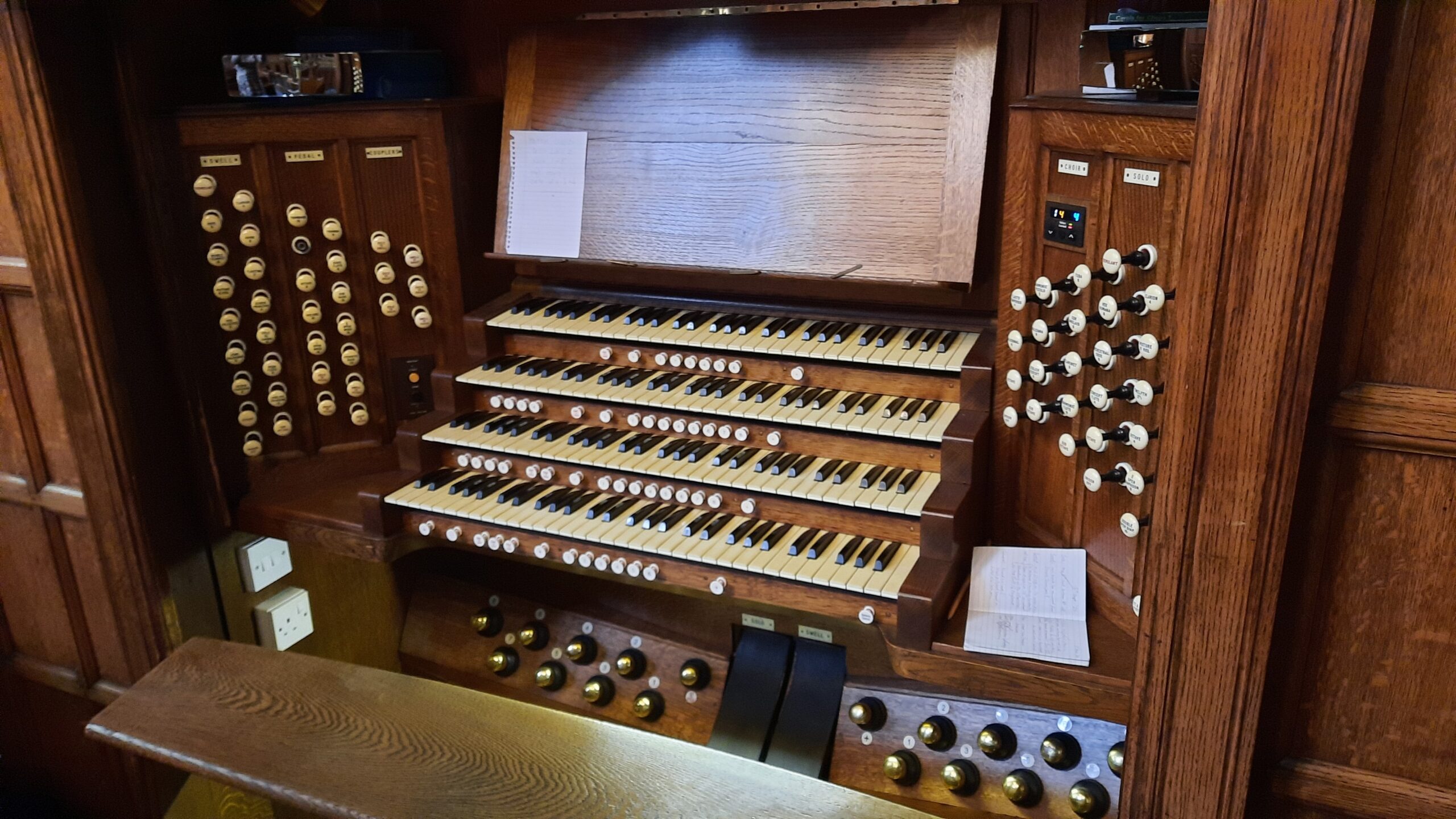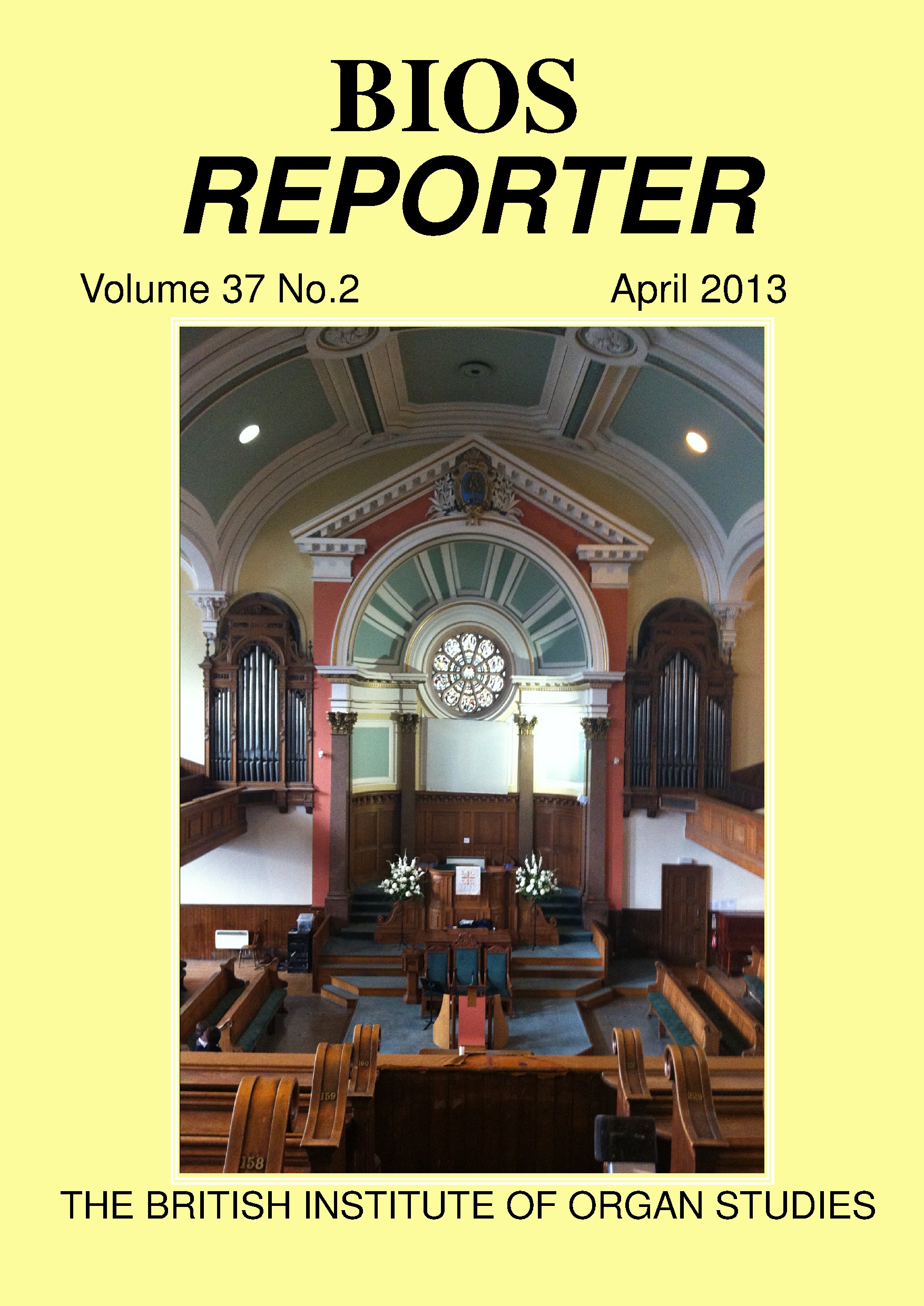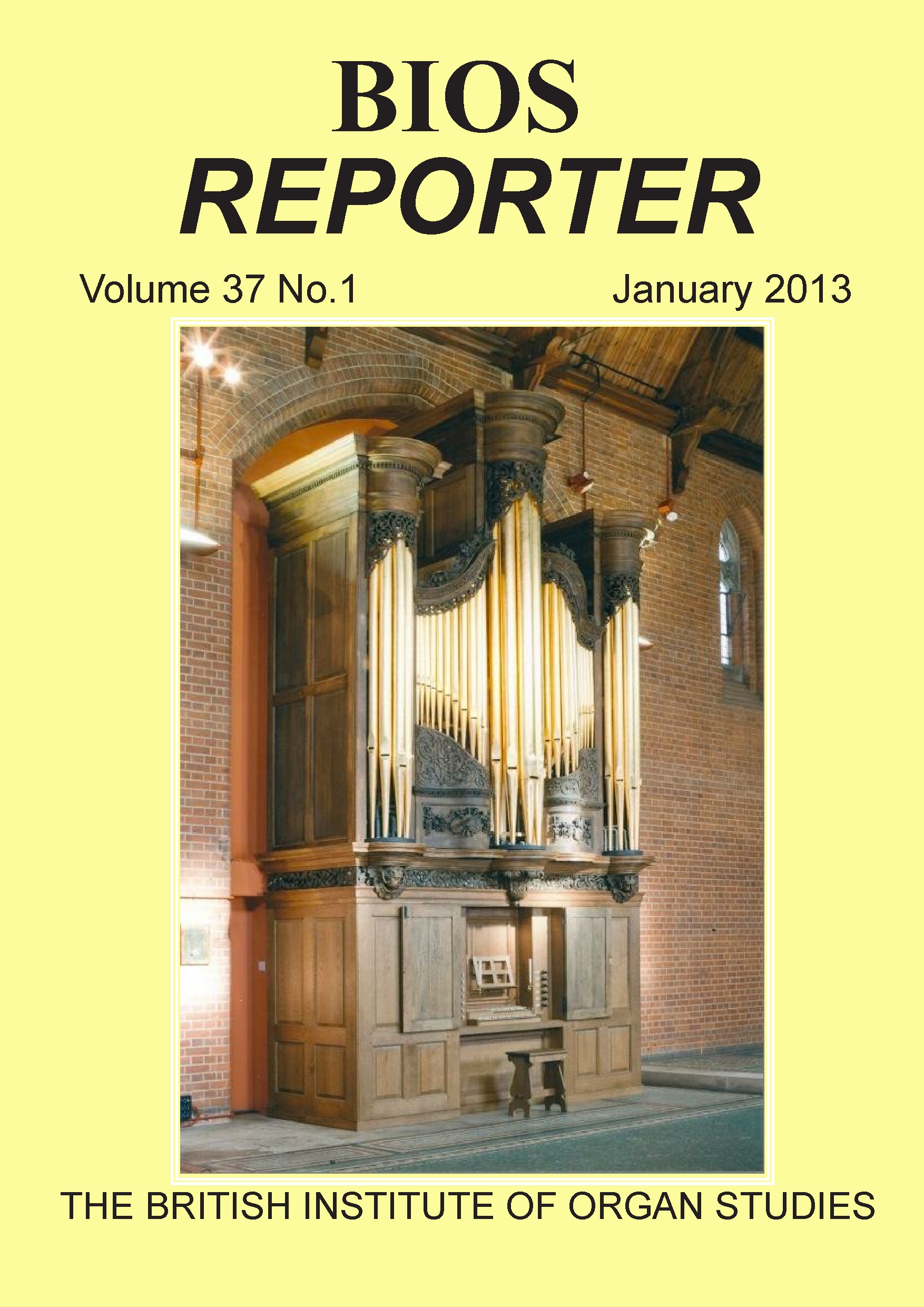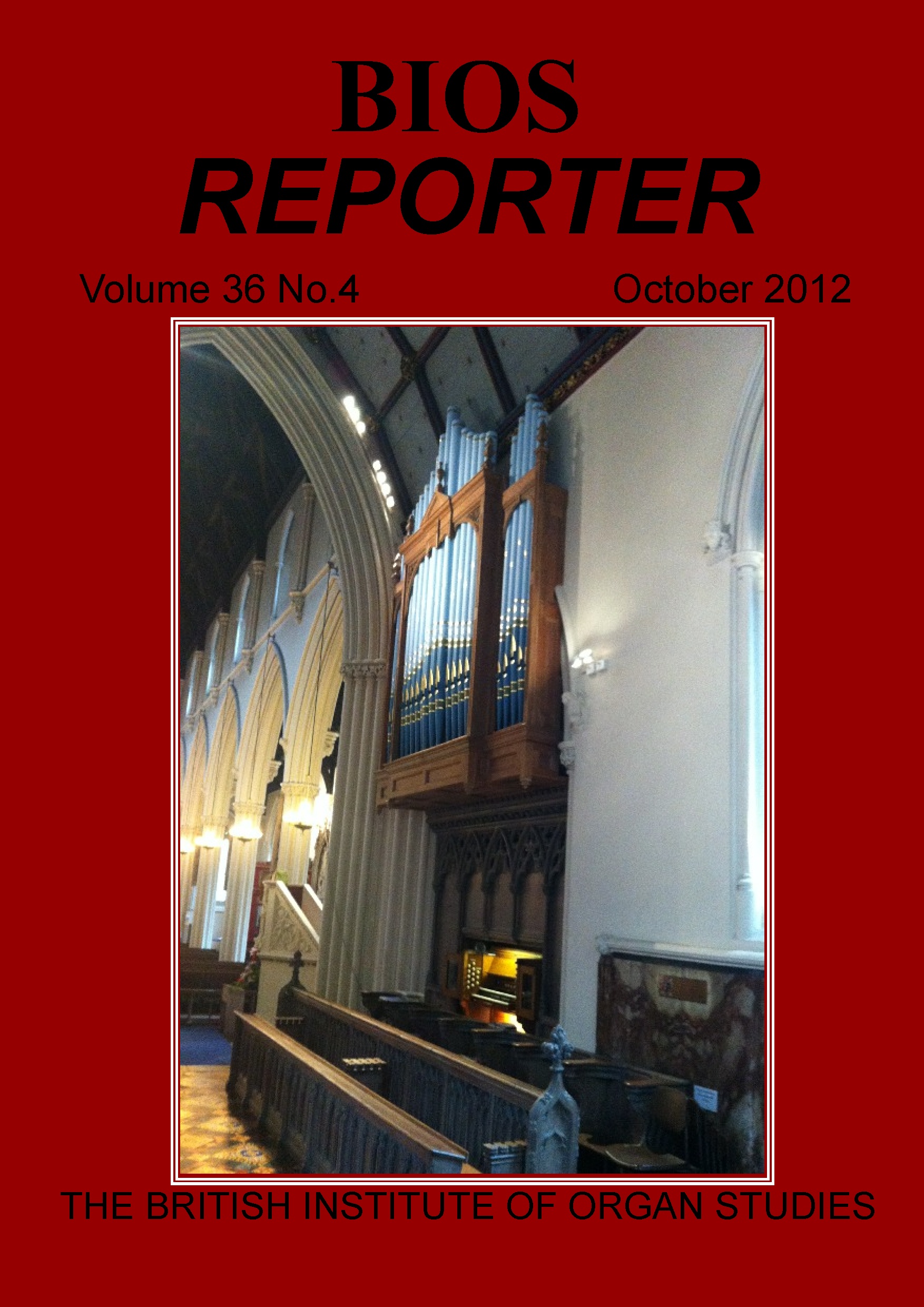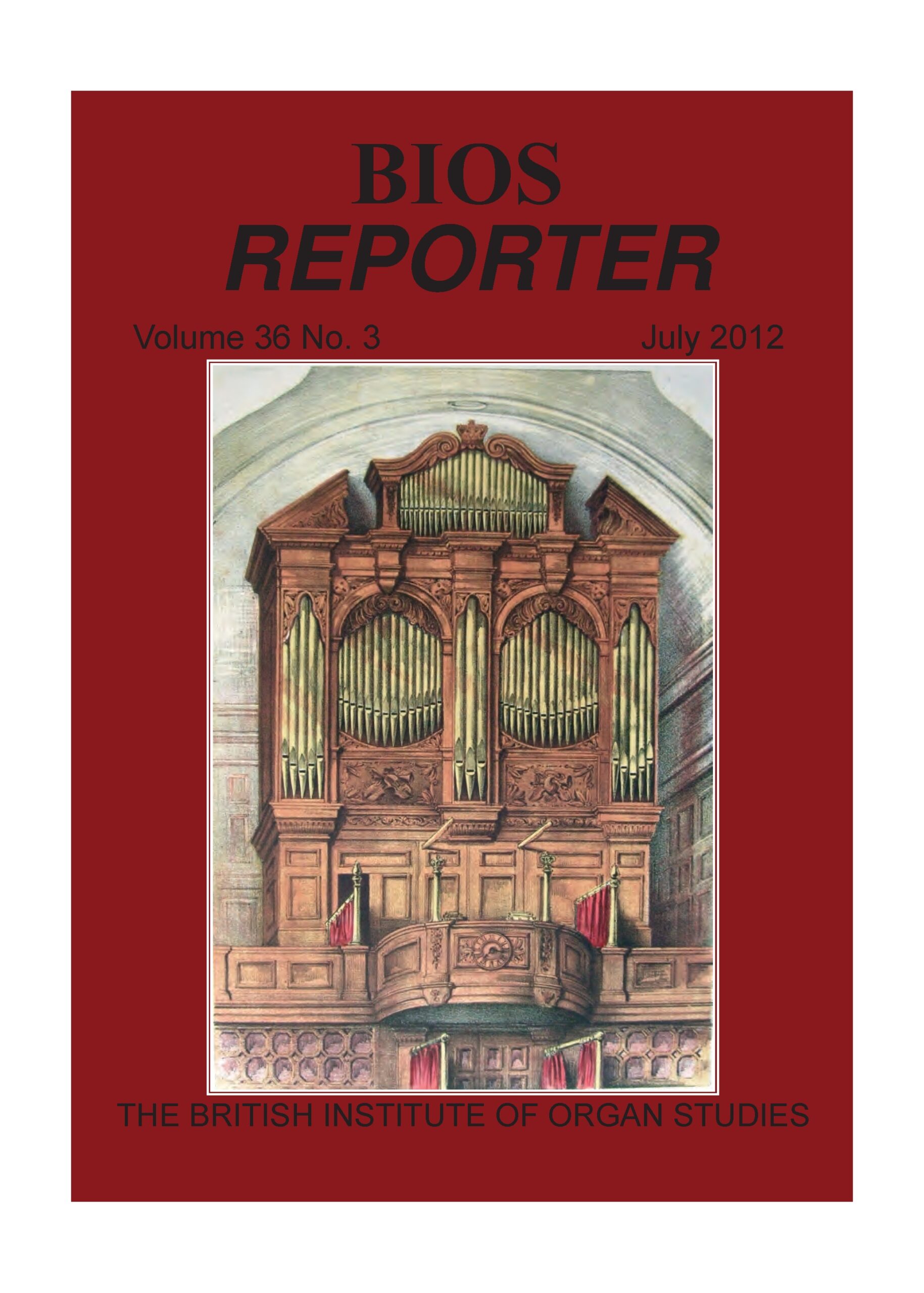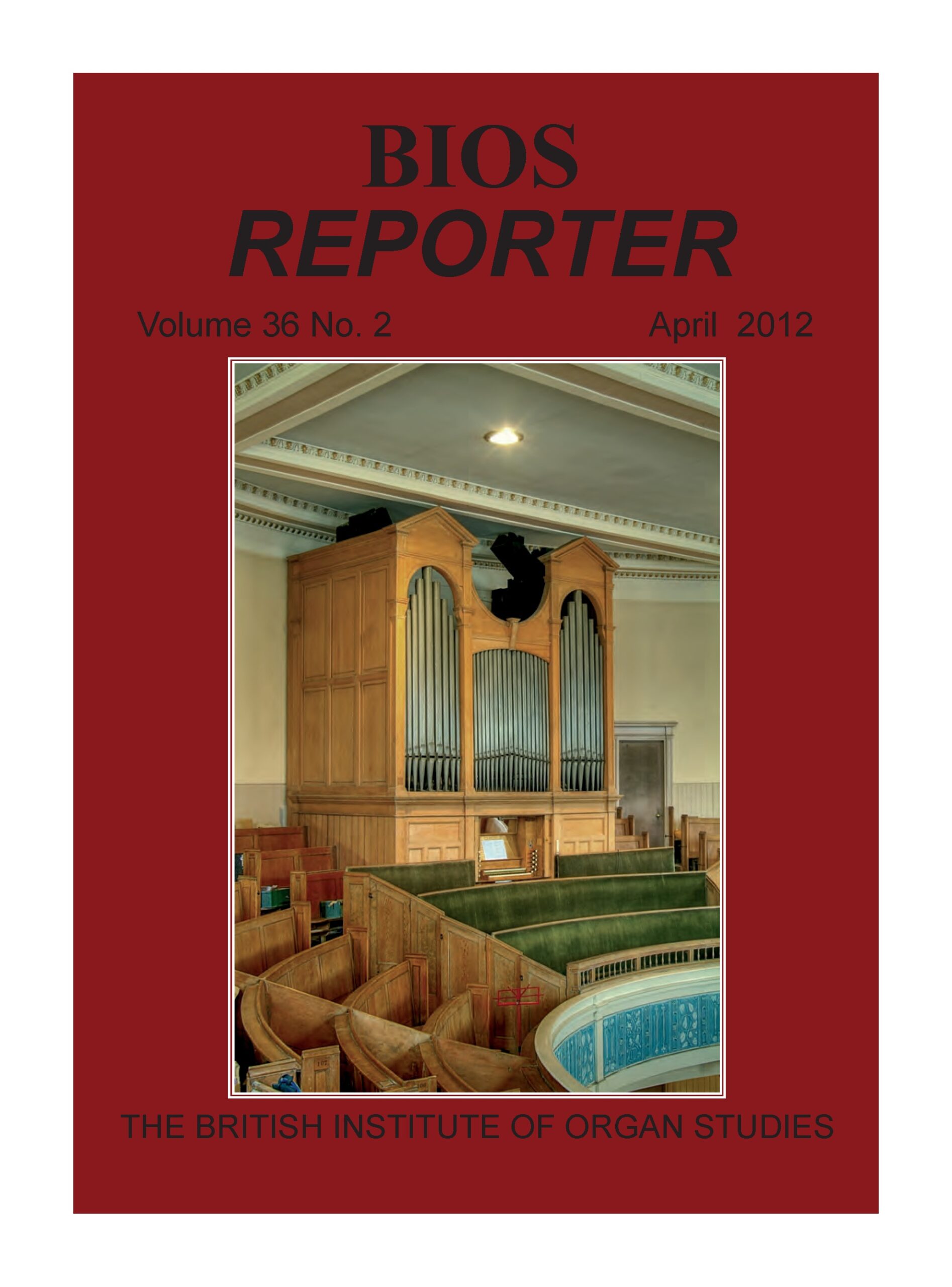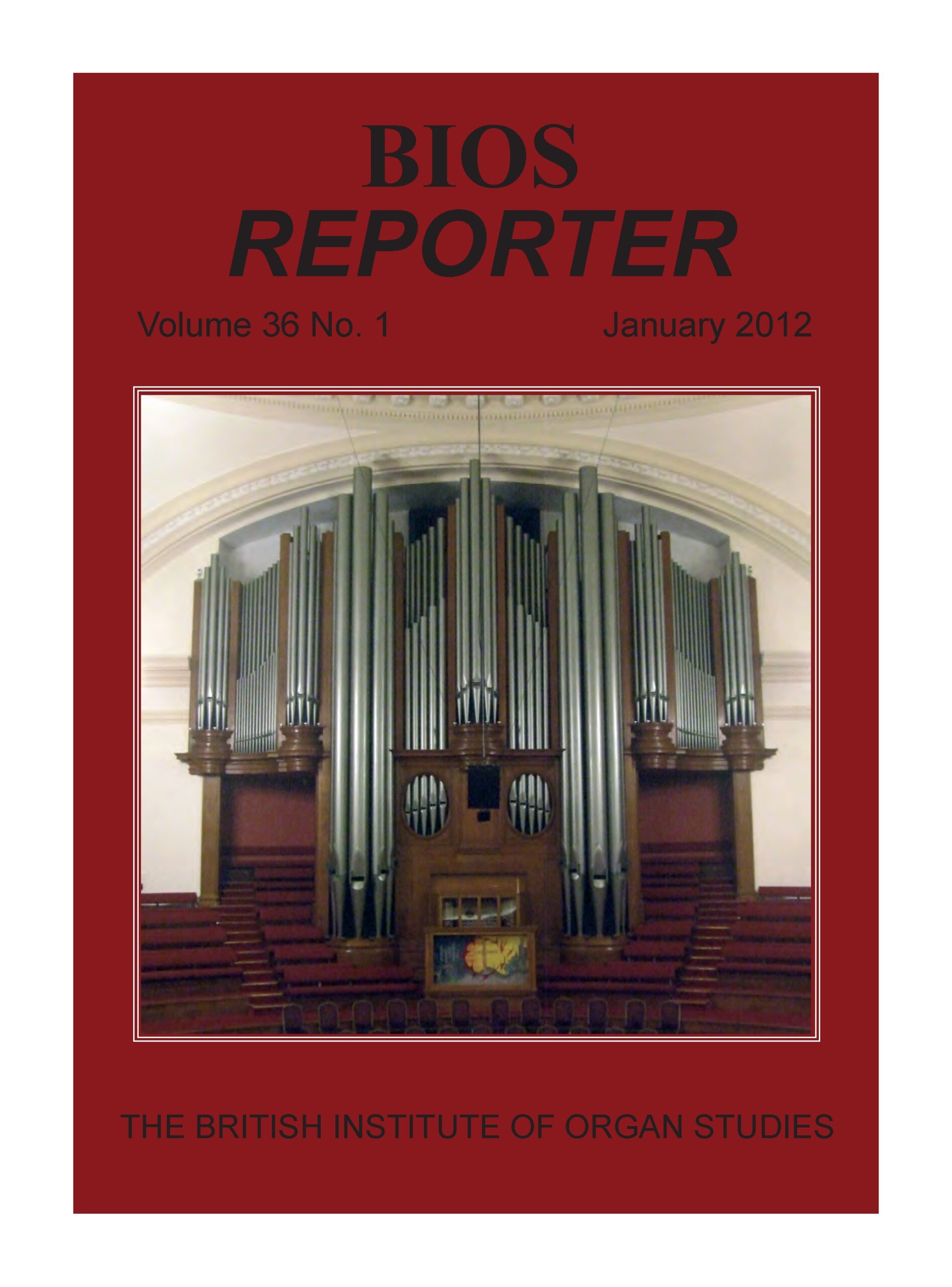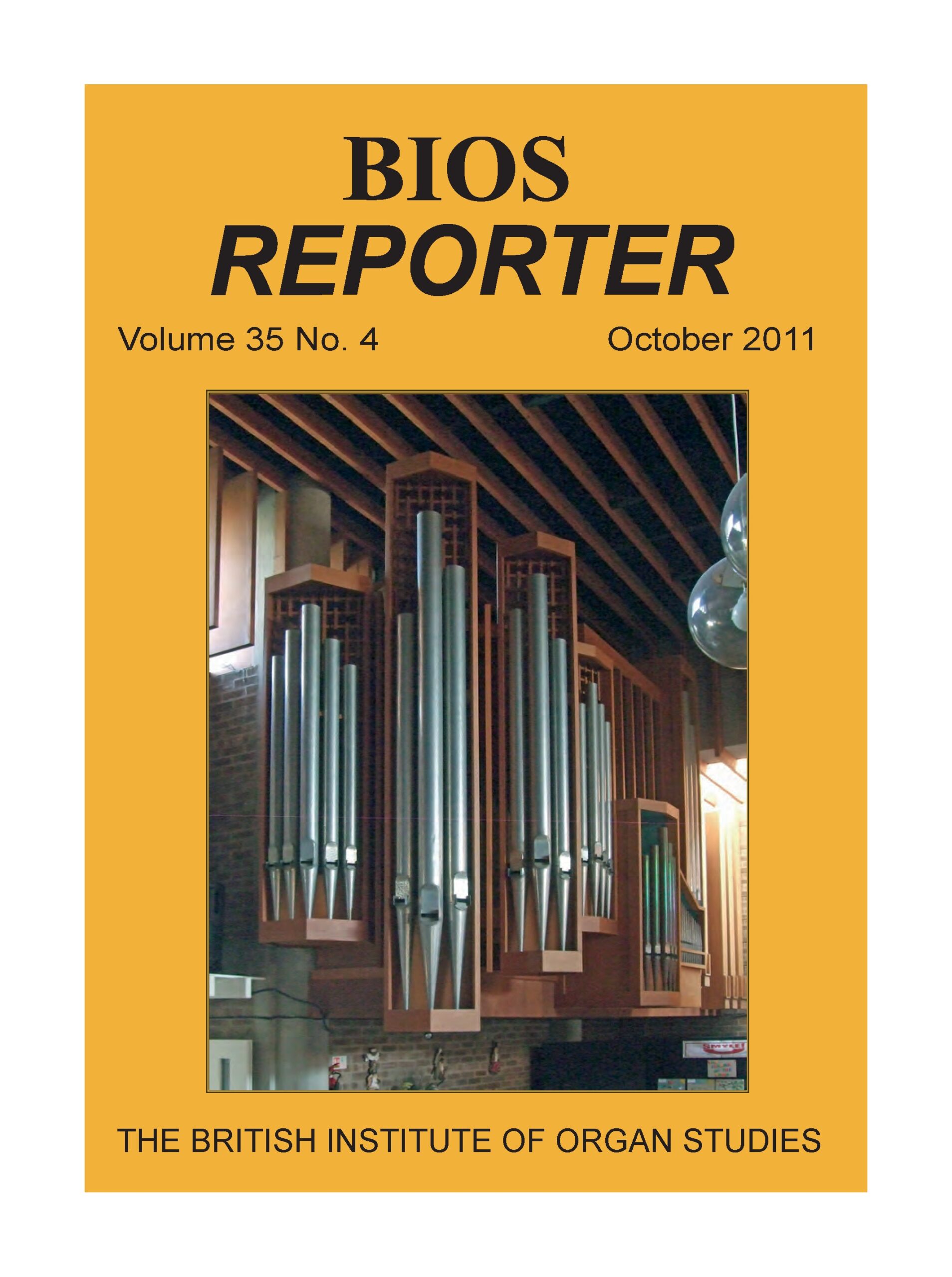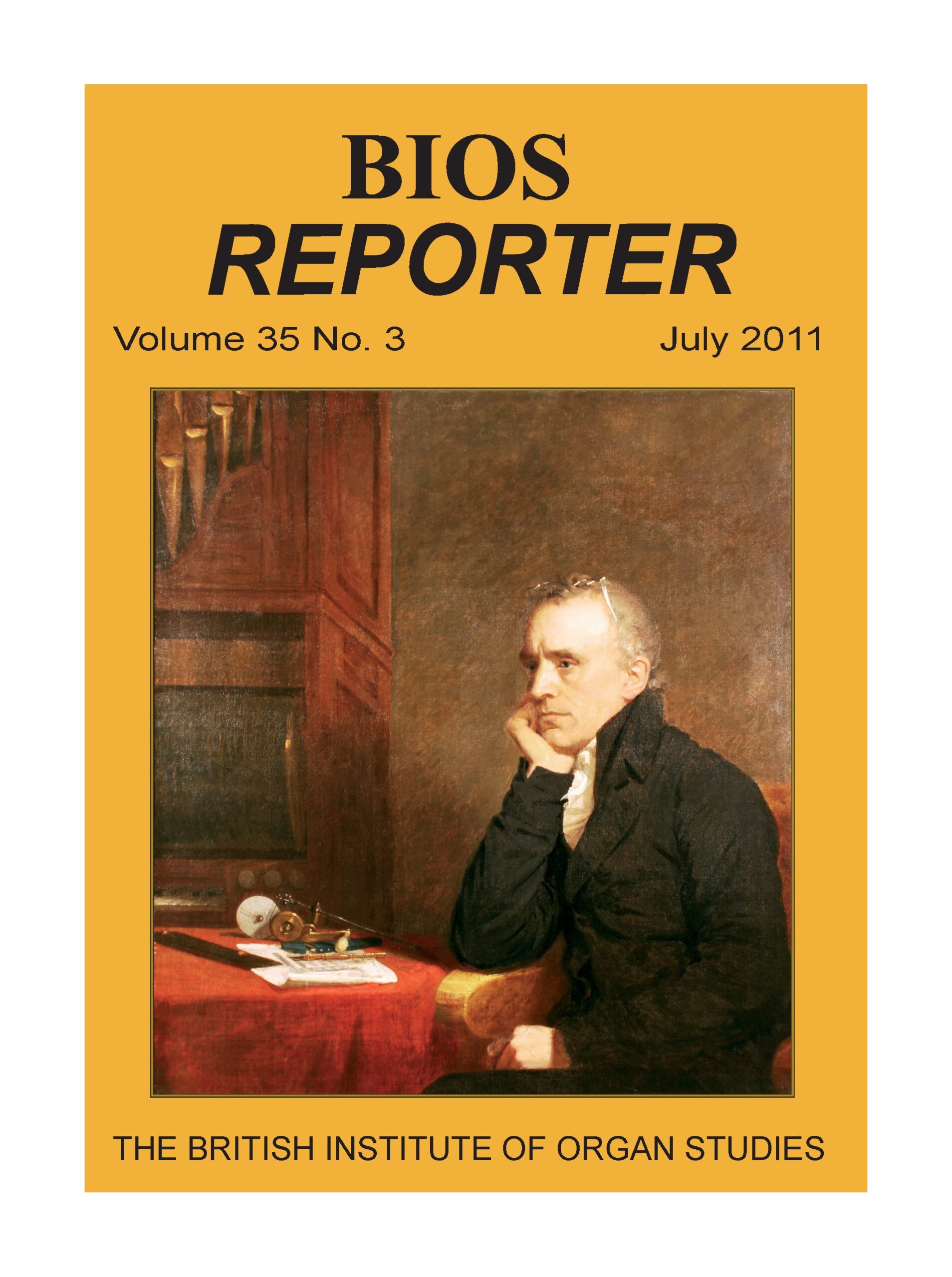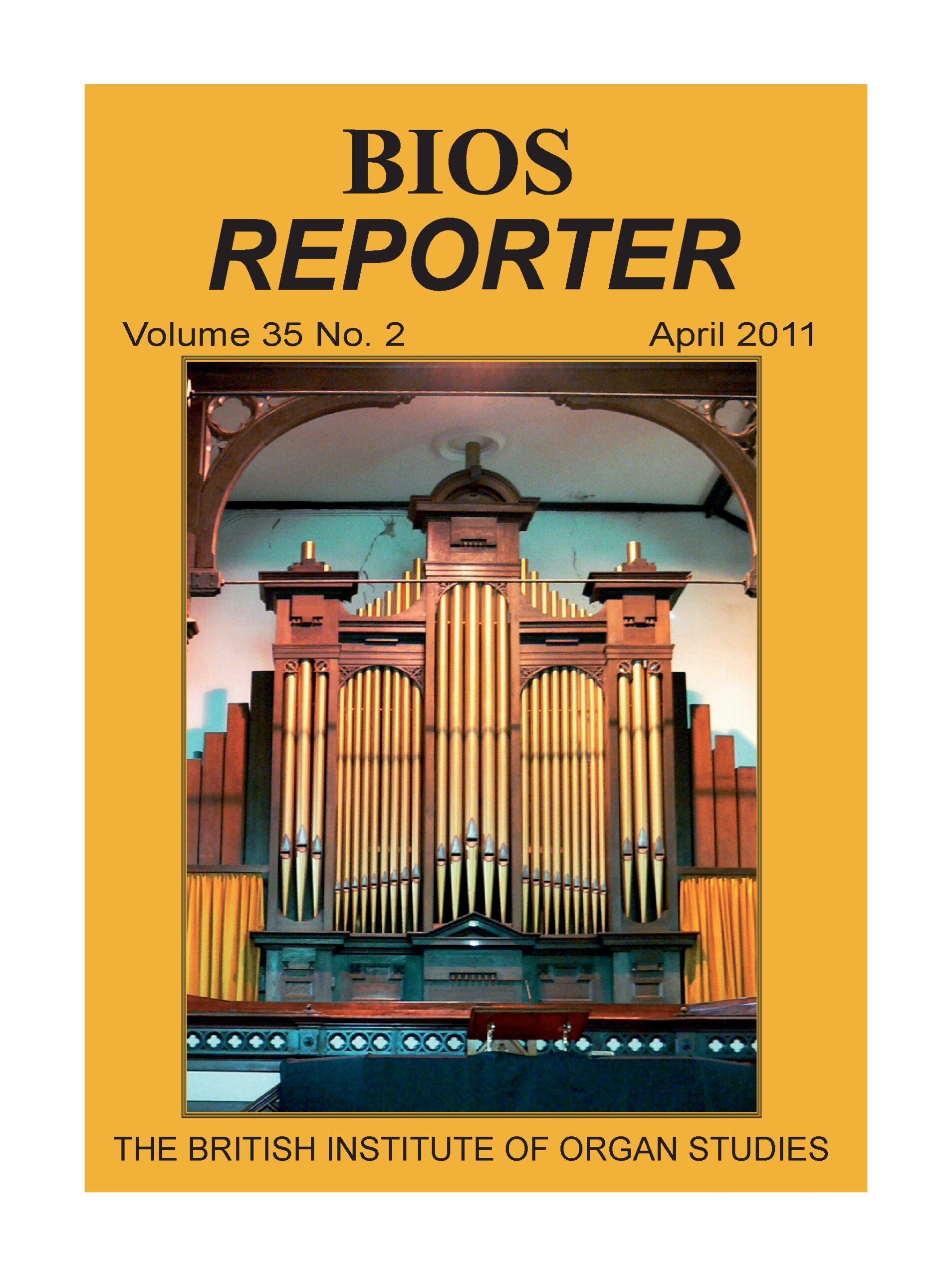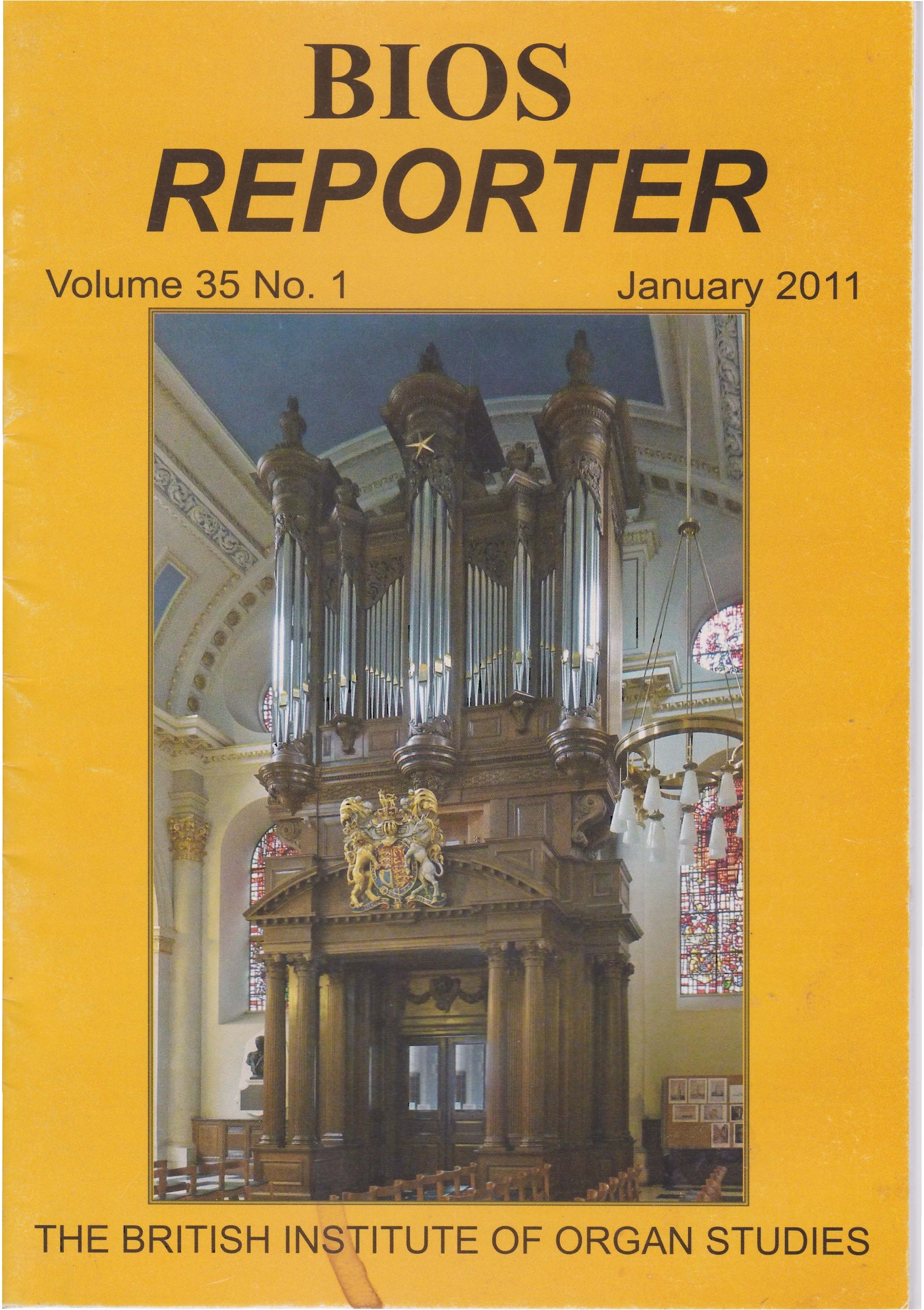BIOS publishes a quarterly Reporter newsletter and magazine and a yearly Journal. Both contain articles on organ history, the Journal hoping to attract mature studies, the Reporter offering a place for exposure of interim or conjectural work.
BIOS Reporter – Volume 37, No.2 – April 2013
Some interesting questions have been raised in the letters printed and I would like to pick up on one or two points if I may. Recently I had cause to play the Sneztler organ in the premises of The Royal Order of Scotland, Edinburgh which was installed in 1757. This organ is in very original read more
BIOS Reporter – Volume 37, No.1 – January 2013
I am well aware of the importance of our academic writings and I am very happy to be associated with them. It has recently come to my attention that an organ near Edinburgh has recently been rebuilt to a “historic” specification, with a shortened swell and a lot of additions being removed. An organist friend read more
BIOS Reporter – Volume 36, No.4 – October 2012
This being my first edition of the Reporter as editor, I would like to take the opportunity to thank my predecessor David Shuker for his help in handing over the position and also for his work over the past few years as editor. He has done an excellent job and I am sure, as you read more
BIOS Reporter – Volume 36, No.3 – July 2012
The 2012 Oxford Residential conference may not have provided a clear answer to the question posed by the organisers (see p 67) but one of the talks did cover a relevant subject in a very thought-provoking way. Timothy Day’s exploration of the origin of the contemporary ‘Anglican sound’ was based on the availability of almost read more
BIOS Reporter – Volume 36, No.2 – April 2012
The losses of historic organs in London due to bomb damage during the Second World War is a subject that has recently been covered in BIOS meetings. The seemingly random nature of this destruction is all the more striking when one considers how instruments carefully preserved over several centuries were destroyed, in some cases, in read more
BIOS Reporter – Volume 36, No.1 – January 2012
It has been my good fortune on a few occasions recently to come across books, music or artefacts where previous owners have left their mark in various ways. Perhaps the most striking for me personally was to discover that my copy of the 1769 edition of William Herschel’s Sei Sonate per il Cembalo was one read more
BIOS Reporter – Volume 35, No.4 – October 2011
The introduction of barrel organs into churches during the latter half of the eighteenth century is often seen as an ingenious solution to a practical problem, namely, a shortage of people able or prepared to play the required accompaniments to congregational worship. An obvious limitation to barrel organs was the number of hymn tunes and read more
BIOS Reporter – Volume 35, No.3 – July 2011
The chapel of Cranleigh School has recently been graced with a brand-new Mander organ built to a very high specification, both tonally and technologically. It was against the backdrop of this fine instrument, during a recent IBO meeting, that I was given the somewhat daunting task of extending some thoughts on the provision of organs read more
BIOS Reporter – Volume 35, No.2 – April 2011
The cover picture is of an organ that no longer exists. Furthermore the loss of this organ in Durham Street Methodist Church during the earthquake that struck Christchurch New Zealand recently was accompanied by a tragic loss of life. Two employees of the South Island Organ Company along with a helper from the church were read more
BIOS Reporter – Volume 35, No.1 – January 2011
This first issue of the second decade of the twenty-first century includes news of a significant development in the work of BIOS – the reIocation of the British Organ Archive (BOA) to its new home at the Cadbury Research Library at the University of Birmingham. The Archive is now housed in state-of-the-art facilities with a read more
